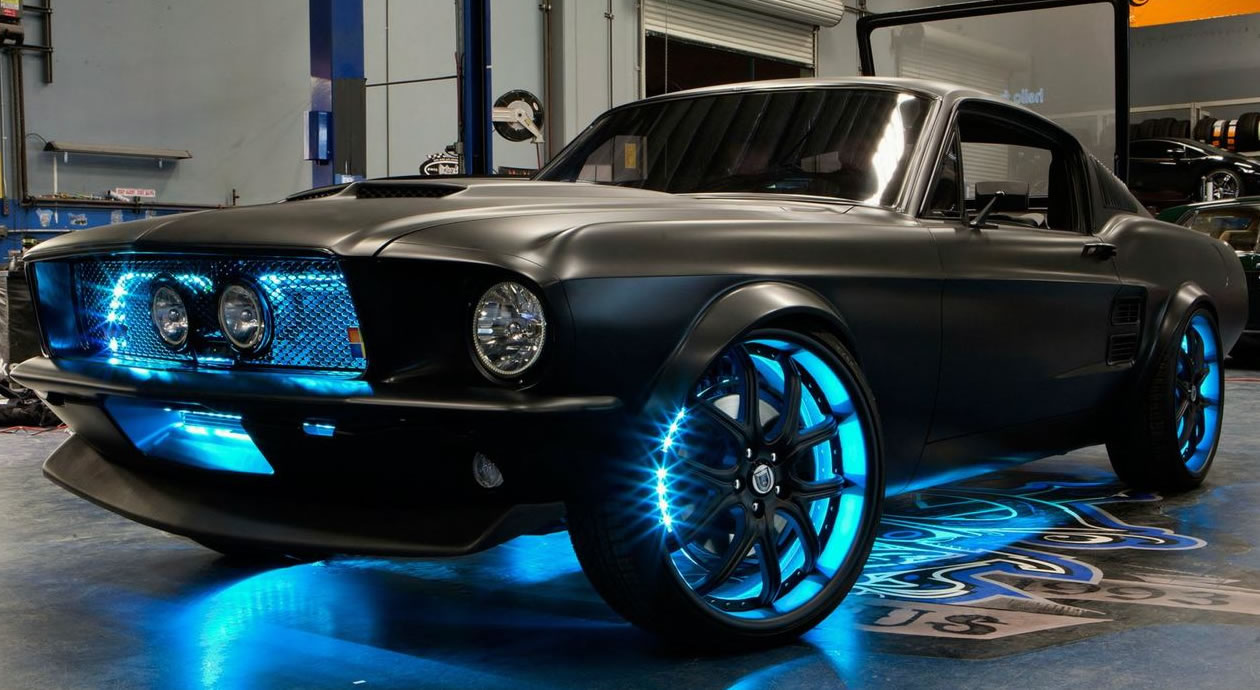In Wisconsin, vehicle underglow lights have become a popular trend among car enthusiasts. These lights are often used to enhance the aesthetics of vehicles, providing a unique look in dark conditions. However, it’s important to understand the regulations surrounding what colors are legal for underglow in Wisconsin to avoid potential fines and maintain safety on the roads.
Understanding Vehicle Underglow
Vehicle underglow refers to the lighting installed under a vehicle, which can come in a variety of colors. These lights can create a striking visual effect, especially at night, and are often used to make cars stand out at car shows, meets, or during night-time drives. However, the legality of using these lights depends on state regulations, which are designed to maintain safety on public roadways.
Legal Colors for Underglow in Wisconsin
In Wisconsin, there are specific regulations regarding the colors of vehicle underglow lights. The law states that certain colors can be used while others are prohibited due to safety concerns. For instance, red and blue lights are largely restricted, as they are typically reserved for emergency vehicles. This means that if you’re thinking about adding underglow to your vehicle, it’s crucial to stick to safer color options.
Permissible Underglow Colors
The following colors of underglow are typically considered legal in Wisconsin:
- White: This is generally the most permissible color for underglow. It’s widely accepted and doesn’t cause confusion with emergency vehicles. Many car enthusiasts use white lights for a classic and clean look.
- Green: This color is also often allowed, although it’s essential to ensure that the shade isn’t too similar to the blue lights associated with police vehicles.
- Amber/Yellow: Similar to white lights, amber or yellow underglow is allowed and is distinctly different from emergency vehicle lights. This color can add a stylish touch to your car without running the risk of legal issues.
Colors to Avoid
While customizing your vehicle’s underglow, it’s important to be aware of which colors are illegal or discouraged. Here are the main colors you should avoid if you’re in Wisconsin:
- Red: This color is typically reserved for emergency and law enforcement vehicles. Using red underglow can lead to confusion and potential traffic violations.
- Blue: Like red, blue lights are usually restricted to police and emergency vehicles. Having blue lights on your car could also attract unwanted attention from law enforcement.
- Flashing Lights: Regardless of the color, any underglow that flashes can be illegal in Wisconsin. Flashing lights can create a distraction on the road and may be confused with emergency signals.
Similar Regulations in Neighboring States
To better understand how Wisconsin’s laws fit into the larger picture, it’s useful to look at the regulations in neighboring states. For instance, Minnesota generally allows similar colors but has its own restrictions, particularly around flashing lights. Illinois permits white and amber lights for underglow but bans blue and red. This variation in laws emphasizes the importance of understanding local regulations before outfitting your vehicle.
Tips for Complying with the Law
When considering adding underglow to your vehicle, here are some practical tips to ensure compliance with Wisconsin law:
- Research: Before purchasing underglow lights, review the latest Wisconsin vehicle lighting laws. Laws can change, so it’s important to stay informed.
- Choose Wisely: Stick with approved colors like white, green, or amber to avoid potential legal issues.
- Installation: Ensure that your underglow kit is installed correctly and securely to prevent any electrical hazards.
- Use Sparingly: While underglow can enhance your vehicle’s appearance, use it judiciously. It’s advisable to keep lights off while driving, especially on highways or busy streets, to minimize distractions.
- Follow Local Ordinances: Be aware of any local city or municipal regulations regarding vehicle lighting, as these can sometimes differ from state laws.
Safety Considerations
Beyond legalities, there are practical safety considerations when using underglow lights. Distractions are a significant factor in road incidents. Bright or moving lights can divert attention from the task of driving. When deciding to use underglow, consider the impact on both your safety and that of other drivers. Furthermore, ensure your underglow does not obstruct any existing vehicle lights, as this could increase your risk of being involved in an accident.
Conclusion
Understanding the regulations surrounding vehicle underglow lights in Wisconsin is crucial for all car enthusiasts. While adding artistic flair to your vehicle can be fun, you must adhere to state laws and guidelines for safe driving. The main takeaways are to utilize permissible colors such as white, green, and amber while avoiding red and blue. By doing so, you not only comply with the law but also contribute to road safety for everyone.
FAQs
1. Can I use multi-colored underglow lights in Wisconsin?
While you may be able to use multi-colored underglow lights, you should avoid colors associated with emergency vehicles, such as red and blue. Stick to safer colors like white, green, and amber.
2. Are there any restrictions on brightness for underglow lights in Wisconsin?
Wisconsin does not specify brightness limitations for underglow lights; however, they should not distract other drivers or obstruct visibility.
3. What are the penalties for using illegal underglow colors in Wisconsin?
The penalties for using illegal underglow colors can include fines, citations, and potential traffic stops. It’s essential to stay compliant to avoid these issues.
4. Is it legal to drive with underglow lights on?
Generally, it is advisable to keep underglow lights off while driving to avoid distraction. Instead, use them while parked, such as during shows or events.
5. Can I install underglow lights on a motorcycle in Wisconsin?
Yes, underglow lights can be installed on motorcycles, but the same color regulations apply. Stick to permissible colors and avoid bright or flashing lights.



